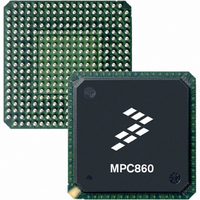MPC8241LZQ200D Freescale Semiconductor, MPC8241LZQ200D Datasheet - Page 51

MPC8241LZQ200D
Manufacturer Part Number
MPC8241LZQ200D
Description
IC MPU 32BIT 200MHZ PPC 357-PBGA
Manufacturer
Freescale Semiconductor
Datasheet
1.MPC8241LZQ200D.pdf
(58 pages)
Specifications of MPC8241LZQ200D
Processor Type
MPC82xx PowerQUICC II 32-bit
Speed
200MHz
Voltage
1.8V
Mounting Type
Surface Mount
Package / Case
357-PBGA
Family Name
MPC82XX
Device Core
PowerQUICC II
Device Core Size
32b
Frequency (max)
200MHz
Instruction Set Architecture
RISC
Supply Voltage 1 (typ)
1.8V
Operating Supply Voltage (max)
1.9V
Operating Supply Voltage (min)
1.7V
Operating Temp Range
0C to 105C
Operating Temperature Classification
Commercial
Mounting
Surface Mount
Pin Count
357
Package Type
BGA
Lead Free Status / RoHS Status
Contains lead / RoHS non-compliant
Features
-
Lead Free Status / Rohs Status
Not Compliant
Available stocks
Company
Part Number
Manufacturer
Quantity
Price
Company:
Part Number:
MPC8241LZQ200D
Manufacturer:
FREESCALE
Quantity:
513
Company:
Part Number:
MPC8241LZQ200D
Manufacturer:
Freescale Semiconductor
Quantity:
10 000
Part Number:
MPC8241LZQ200D
Manufacturer:
FREESCALE
Quantity:
20 000
7.7.3
An estimation of the chip junction temperature, T
where:
The junction-to-ambient thermal resistance is an industry-standard value that provides a quick and easy
estimation of thermal performance. Unfortunately, two values are in common usage: the value determined
on a single-layer board and the value obtained on a board with two planes. For packages such as the PBGA,
these values can be different by a factor of two. Which value is closer to the application depends on the
power dissipated by other components on the board. The value obtained on a single-layer board is
appropriate for the tightly packed printed-circuit board. The value obtained on the board with the internal
planes is usually appropriate if the board has low power dissipation and the components are well separated.
When a heat sink is used, the thermal resistance is expressed as the sum of a junction-to-case thermal
resistance and a case-to-ambient thermal resistance:
where:
R
change the case-to-ambient thermal resistance, R
sink, the airflow around the device, the interface material, the mounting arrangement on the printed-circuit
board, or the thermal dissipation on the printed-circuit board surrounding the device.
To determine the junction temperature of the device in the application when heat sinks are not used, the
thermal characterization parameter (ψ
using the following equation:
Freescale Semiconductor
θJC
is device-related and cannot be influenced by the user. The user controls the thermal environment to
Shin-Etsu MicroSi, Inc.
10028 S. 51st St.
Phoenix, AZ 85044
Internet: www.microsi.com
Thermagon Inc.
4707 Detroit Ave.
Cleveland, OH 44102
Internet: www.thermagon.com
T
R
P
R
R
R
A
D
θJA
θJA
θJC
θCA
= ambient temperature for the package (°C)
= power dissipation in the package (W)
Heat Sink Usage
= junction-to-case thermal resistance (°C/W)
= junction-to-ambient thermal resistance (°C/W)
= junction-to-ambient thermal resistance (°C/W)
= case-to-ambient thermal resistance (°C/W)
T
R
T
J
θJA
J
= T
= T
= R
A
T
+ (ψ
+ (R
θJC
MPC8241 Integrated Processor Hardware Specifications, Rev. 10
JT
θJA
+ R
× P
× P
θCA
D
D
)
)
JT
) measures the temperature at the top center of the package case
θCA
J
, can be obtained from the equation:
. For instance, the user can change the size of the heat
888-642-7674
888-246-9050
System Design Information
51









